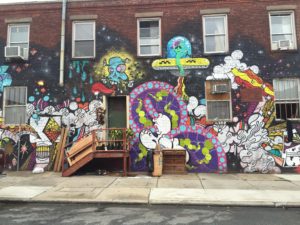Postmortem: on process, collaboration
The most difficult aspect of working creatively with others is the compromise. Every step of the way, there were things which I would have liked to have done slightly differently than how they ended up being done given the input of all participants. I believe it’s possible for everyone to get exactly what they want— that is, unanimous satisfaction with the final product— through some sort of streamlined communication process. I’m not yet exactly sure what this is, but I know it involves:
- everyone knowing what they want.
- everyone communicating what they want as soon as possible (i.e. before any other step in the process of creating something happens). Once everyone understands what everyone else wants, the most fitting idea will emerge.
- planning the entire creation process before starting, in terms of who will do what, and considering that roles may have to change slightly, later on.
- responding rationally rather than emotionally. Like in a debate, or a critique, it’s not personal. When person A tries to explain why they think person B’s idea or choice may not be the best way to achieve a certain aesthetic, narrative or other goal, person B needs to respond by considering the new idea rationally (why does person A think this idea will better suit the collective goal) rather than getting upset that the idea they’ve fallen in love with may not be the most effective one.
- all participants having the energy, at every step of the way, to speak their mind. When everyone has agreed on a certain shot but then one participant uncovers a way to possibly improve the shot, that thought needs to be externalized as soon as possible, and then considered by everyone.
- reaching out for help without hesitation
Working like this is utterly exhausting, and takes possibly a lifetime to perfect, but must be done if the best possible outcome is desired. I’m not unhappy with the final product but know that I could have improved my satisfaction with it by figuring out what I wanted out of this project more concretely, working with the others in planning out specific roles for the entire creation process beforehand, and reaching out for help.
Seeking help is my biggest shortcoming— I tend to have a completist attitude toward my involvement to all the moving parts of my work, leaving me feeling like I’ve lost control or like the work is less valuable to myself when I seek the often much needed aide from others in order to get the job done better/faster. I was too shy or perhaps egotistical to reach out for someone with a better speaking voice to do the narration, so I did it myself, and I think it’s subpar despite my best efforts. Slowly I’ve been realizing that my work’s value to others is actually what gauges its value to myself, and so it’s more important that I utilize the world around me to make sure my ideas are executed most effectively rather than caring so much about my personal keepsake of “what I did”.
